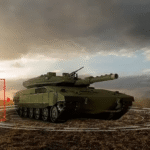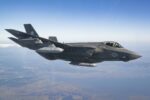Japan has achieved a major milestone in directed energy weapons development by successfully firing an electromagnetic railgun from a maritime platform at an actual target vessel. This world-first demonstration underscores Tokyo’s commitment to advancing cutting-edge defense technologies amid growing regional security challenges.
Railgun Milestone: First Live-Fire Test Against Maritime Target
In early June 2024, Japan’s Acquisition, Technology & Logistics Agency (ATLA) confirmed that it had conducted the first-ever live-fire test of a railgun system from a seaborne platform against an actual surface target. The test was carried out aboard the JS Asuka (ASE-6102), the Japan Maritime Self-Defense Force’s (JMSDF) experimental trials ship. The event marks the first known instance globally where an operational railgun was fired at a real vessel during sea trials.
The test involved launching hypervelocity projectiles using electromagnetic force rather than chemical propellants. While specific details on projectile speed and range remain classified, Japanese defense officials indicated that the shot successfully struck and damaged its intended maritime target — reportedly an unmanned derelict ship used as a target hulk.
This demonstration follows years of ground-based testing and represents the transition of Japan’s railgun program into realistic operational environments. It also positions Japan at the forefront of integrating electromagnetic weapons into naval warfare.
System Development and Technical Specifications
The Japanese railgun is being developed under ATLA’s Electromagnetic Launcher (EML) program launched in 2016. The system uses Lorentz-force acceleration to propel projectiles at hypersonic speeds — potentially exceeding Mach 6 — without reliance on explosives or propellants.
Key technical aspects include:
- Barrel length: Approximately 6 meters
- Muzzle energy: Up to 20 MJ (megajoules)
- Projectile type: Kinetic energy penetrator with no explosive payload
- Firing rate: Low sustained rate due to power constraints; single-shot mode for now
The system is powered by onboard capacitors that store and release high-voltage pulses to generate magnetic fields along parallel rails. These accelerate the projectile down the barrel with extreme velocity. While still in prototype form, ATLA has stated that future iterations may support higher rates of fire and integration with automated fire control systems.
JS Asuka as Testbed for Advanced Naval Technologies
The JS Asuka (ASE-6102), commissioned in 1995, serves as JMSDF’s dedicated test platform for emerging naval technologies including radar systems, sonar arrays, missile launchers, and now directed-energy weapons such as railguns and lasers.
The ship was modified to accommodate the large power supply infrastructure necessary for railgun operation. These modifications likely included additional capacitors or flywheel energy storage systems along with reinforced mounting structures to handle recoil forces and thermal loads.
The choice of JS Asuka reflects its flexibility as a modular research vessel capable of supporting experimental hardware without compromising frontline fleet readiness. Its use also allows engineers to monitor performance data closely under controlled conditions before considering deployment aboard combatant ships such as destroyers or frigates.
Tactical Implications for Maritime Strike and Missile Defense
The successful live-fire trial signals significant potential for future applications in both offensive strike roles and defensive intercept missions:
- Anti-surface warfare (ASuW): Railguns can deliver kinetic strikes against enemy vessels at extended ranges with minimal warning due to their high velocity and flat trajectory profiles.
- Aerial threat interception: Hypersonic projectiles may enable interception of cruise missiles or UAVs if paired with advanced targeting systems.
- Saturation resistance: Unlike missile-based interceptors which are limited by magazine depth and cost-per-shot ratios, railguns could offer deep magazines using inexpensive metal slugs.
If matured into deployable systems aboard frontline JMSDF vessels such as Maya-class Aegis destroyers or future DDG(X)-type platforms under development, these weapons could complement existing SM-3/SM-6 missile arsenals by providing cost-effective layered defense against saturation attacks or swarming threats — particularly relevant given evolving Chinese missile capabilities in the region.
Strategic Context: Regional Security Drivers Behind Railgun Push
This technological leap comes amid intensifying regional tensions involving China’s naval expansionism near Taiwan and within disputed areas like the Senkaku Islands (Diaoyu Islands). Japan’s Ministry of Defense has explicitly cited hypersonic glide vehicles (HGVs) and saturation missile attacks as key threats driving investment into next-generation countermeasures including electromagnetic launchers and high-energy lasers.
The railgun program aligns with Tokyo’s broader strategy outlined in its National Defense Strategy (NDS) released in late 2022. That document emphasized strengthening stand-off strike capabilities alongside bolstering integrated air/missile defense networks through indigenous R&D efforts rather than relying solely on imported U.S. solutions.
Challenges Ahead: Power Supply Limits and Operational Integration
Despite this successful milestone, several hurdles remain before full operationalization:
- Power generation: Current warships lack sufficient onboard electrical generation capacity; future platforms may require integrated electric propulsion or auxiliary power modules specifically designed for DEW support.
- Thermal management: Repeated firings generate intense heat requiring robust cooling solutions not yet fielded at sea scale.
- Sensors & fire control: Accurate long-range targeting demands integration with advanced ISR assets including AESA radars, EO/IR trackers, and AI-assisted cueing algorithms — none yet demonstrated fully integrated with EML systems aboard ships.
A Glimpse Into Future Naval Warfare?
This historic firing represents more than just technological achievement; it offers insight into how navies may evolve over coming decades toward electrically-driven weaponry capable of precision effects at reduced logistical burden compared to traditional munitions stockpiles. While still years away from fleet-wide deployment, Japan’s progress places it among global leaders — alongside U.S., China, and potentially South Korea — pursuing practical applications of electromagnetic launch technology for sea control missions.









